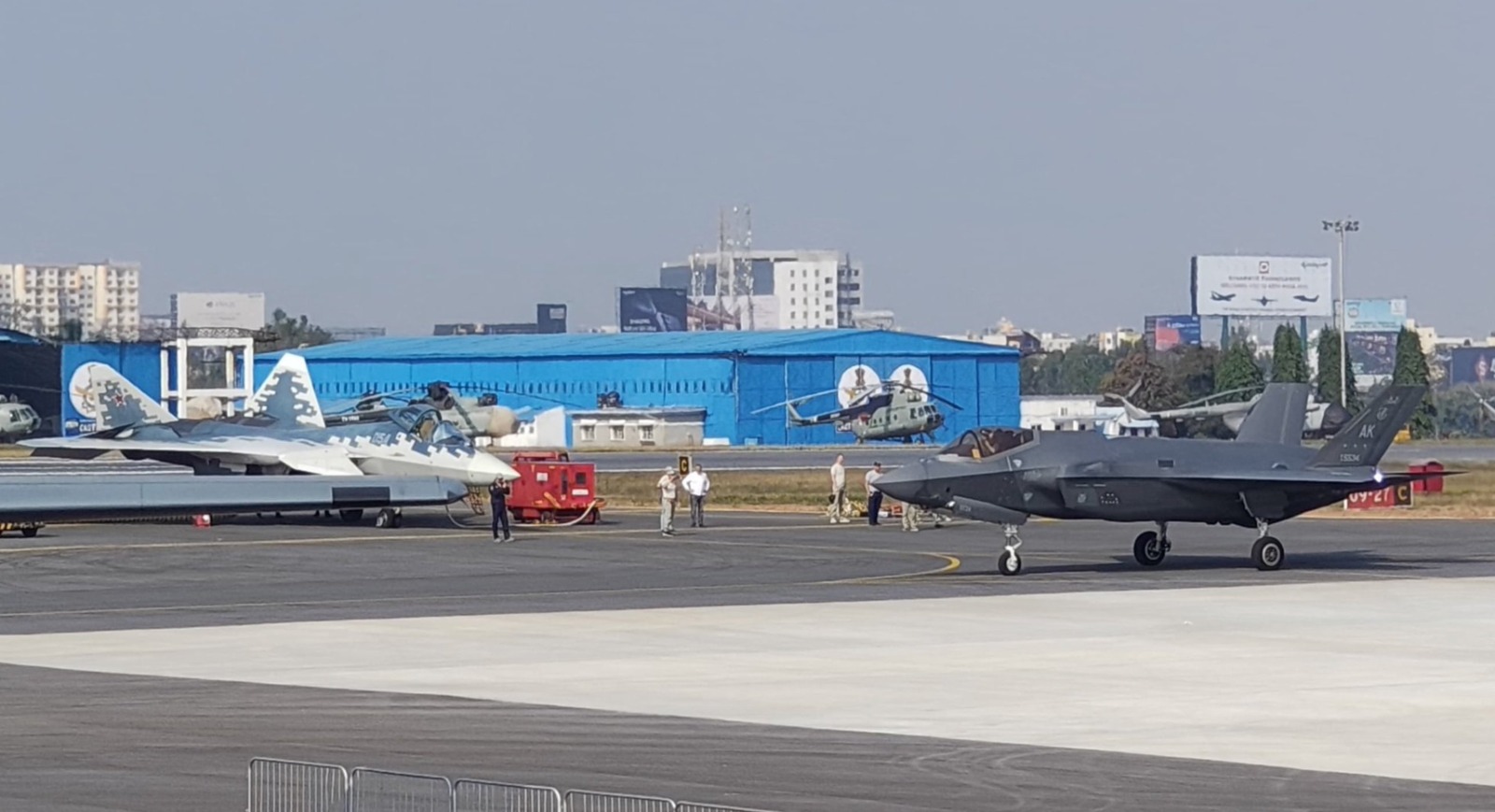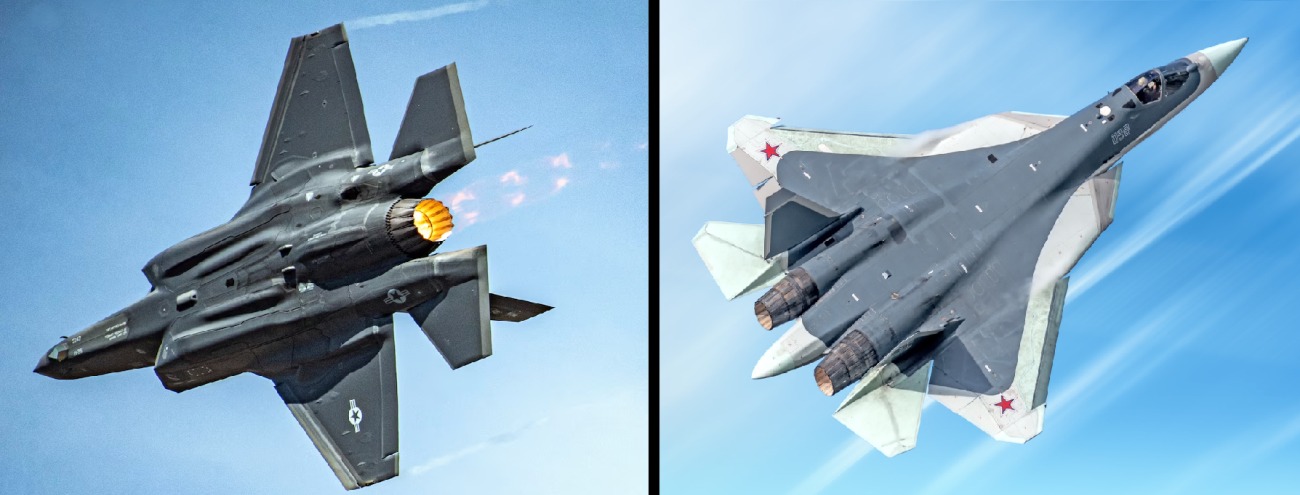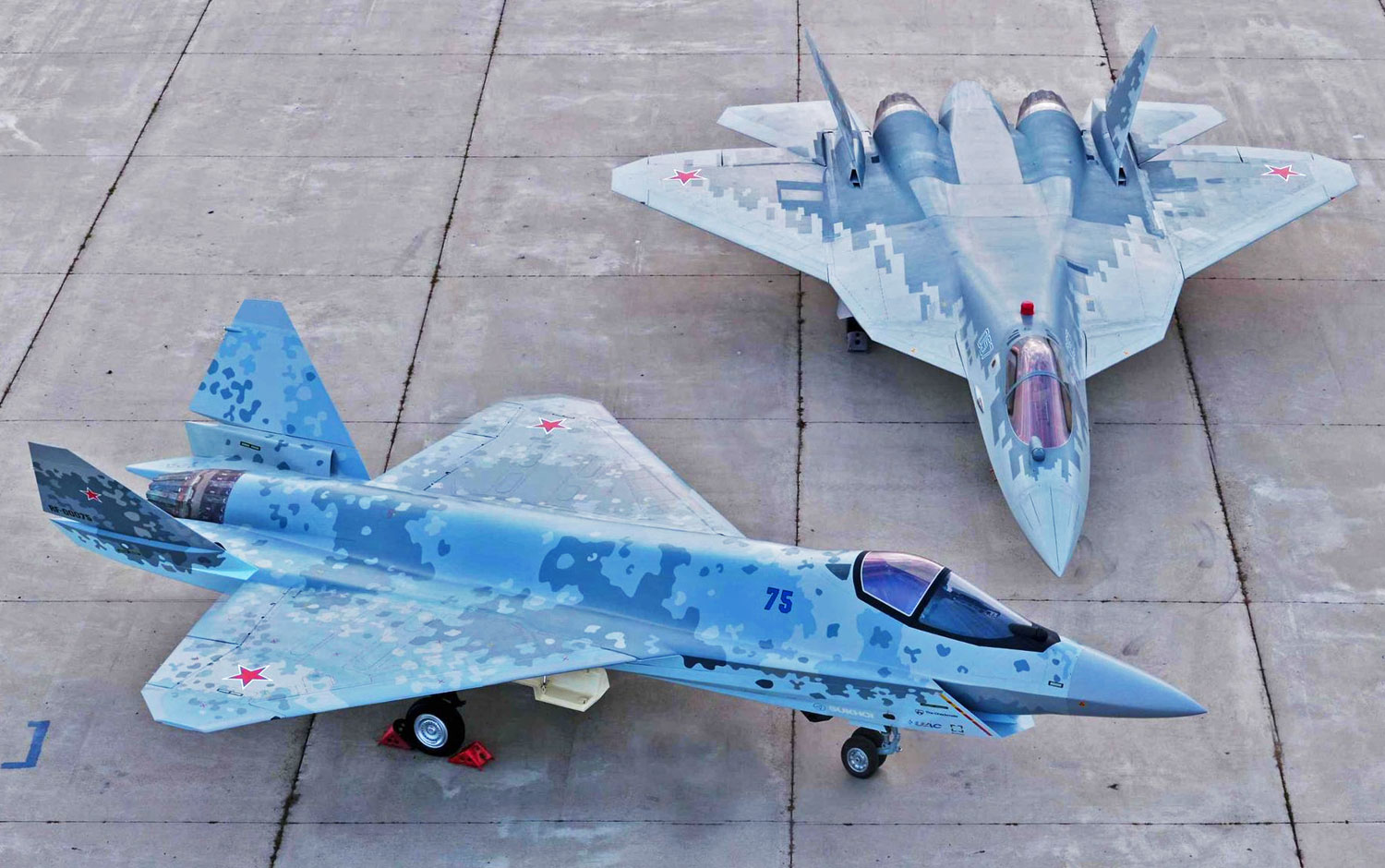Which of the two fifth-generation fighters—the Lockheed Martin F-35 or the Sukhoi Su-57—is technically better suited to the Indian Air Force (IAF)?
This question is difficult to answer because the two aircraft were designed for different roles and developed under distinct economic and industrial constraints. The only correct answer would be that the Su-57 is best suited to Russia’s needs, while the F-35 is tailored to U.S. requirements.
From a practical standpoint, the question becomes even more complex, as major weapons procurement deals are never based solely on technical considerations. Geopolitical factors often introduce subjectivity into the selection process.
Geopolitical pressures were once subtle and discreet, much like the invisible strings of a puppeteer. However, in today’s world, leaders like Donald Trump could openly warn India: “If you buy the Su-57, we will impose wide-ranging sanctions.”
For this reason, we will limit our discussion to a purely technical comparison.

As mentioned earlier, while both the Su-57 and the F-35 are stealth fighters, they are conceptually different in terms of their operational roles. Each aircraft is optimized for its intended role, so the key question is: Which stealth fighter’s operational role aligns better with the IAF’s requirements?
Additionally, since Atmanirbharata (self-reliance) in defense manufacturing is a national priority, it is important to consider which of the two aircraft would be better suited for local production and technology absorption while also taking into account budgetary constraints and the limitations of India’s military-industrial base.
Operational Roles Comparison
The U.S. defense strategy is built on the paradigm that offense is the best defense. In contrast, Russia, as a lesser economic power, relies more on cost-effective asymmetric defense.
Due to its immense geographical size, limited population, long land and maritime borders, and hostile neighbors in all directions, Russia is sharply focused on defending its territorial integrity and sovereignty.
In comparison, the U.S. and its NATO allies prioritize securing raw materials and manufacturing facilities across the globe to sustain the high consumption levels associated with their affluence.
Russia has prioritized air defense over long-range airstrikes, deploying highly capable multi-layered air defense systems to shoot down enemy aircraft attempting to penetrate its airspace.
In technical terms, Russian airspace is heavily contested. (Airspace not defended by adversary air defense systems is referred to as “permissive airspace.” Typically, counterterrorism air operations—such as those in Syria and Afghanistan—are conducted in permissive airspace.)
The Su-57, with its limited stealth, is optimized for air defense and short-range airstrikes from within Russian airspace, aimed at halting enemy ground offensives along its borders.
On the other hand, the U.S. and its Western allies have prioritized long-range airstrikes through contested airspace over air defense.
The F-35 is designed to penetrate contested airspace and destroy enemy air defense systems.
In simple terms, the F-35 is designed to breach Russia’s multi-layered air defense network, while the Su-57 is designed to intercept F-35s attempting to penetrate Russian airspace and block enemy advances along the Russian border.

Su-57 & F-35 Stealth Comparison
The Su-57’s radar cross-section (RCS) is estimated to be between 0.1 and 0.5 square meters, which is significantly larger than the F-35’s RCS of 0.0015 square meters.
The F-35 features all-aspect stealth, meaning ground-based radars, whether positioned in front, behind, or on the sides, struggle to detect it in time for effective engagement by air defense systems.
In contrast, the Su-57 has strong front-aspect stealth but significantly lower all-aspect stealth compared to the F-35. When flying head-on, as it would when intercepting an intruding fighter, the Su-57 can approach an F-35 undetected and engage it at close range.
However, if the Su-57 were to penetrate contested airspace, it would not be detected at long distances, but it would become visible at shorter ranges, giving enemy radars and air defense systems enough time to engage it.
Su-57 Defensive Interception Capability
The Su-57’s defensive interception capability is based on its more advanced and powerful radar sensor suite compared to the F-35.
The Su-57 is equipped with five radars:
-
Three X-band AESA radars (one in the nose and two on the sides).
-
Two L-band radars are integrated into the leading-edge root (LEX) extensions of the wings.
L-band radars are more effective against very low observable (VLO) stealth aircraft, such as the F-22 and F-35, which are optimized primarily against X-band radar frequencies. However, L-band radars have lower resolution due to their longer wavelengths.
By fusing data from its three X-band AESA radars, two L-band AESA radars, and its IRST (Infrared Search and Track) system, the Su-57 can track an F-35 at greater distances than would be possible using a single X-band AESA radar alone.
Additionally, Russia has enhanced the Su-57’s ability to intercept stealth fighters by deploying UHF and VHF-band ground-based radars that can detect the presence of all-aspect stealth fighters and vector Su-57s to the target area.

Role Comparison
The F-35’s primary role is that of a forward sensor—it can penetrate contested airspace undetected to locate and identify enemy targets. These targets can then be engaged by 4th-generation fighters positioned outside contested airspace, using stand-off weapons.
The F-35 also has a limited ability to engage ground targets in contested airspace using air-to-ground weapons carried within its two internal bomb bays.
In contrast, the Su-57 was designed to:
-
Intercept stealth fighters like the F-35 attempting to penetrate defended airspace.
-
Engage ground targets in friendly airspace outside the detection range of enemy radars.
Recently, Russia has enhanced the Su-57’s long-range strike capability by developing low-observable, long-range air-to-surface missiles for the aircraft. The only role that the Su-57 cannot perform is that of a forward sensor, which is a key function of the F-35.
Suitability To IAF Considerations
The F-35 effectively meets the operational requirements of the U.S. Air Force and its NATO allies. It is a highly capable offensive weapon system designed for penetrating contested airspace and conducting precision strikes.
In contrast, the Su-57 is primarily a defensive weapon system. It is designed to deter and intercept enemy stealth fighters attempting to breach defended airspace.
Additionally, it can strike deep into enemy territory by approaching the line of contact undetected and launching stealthy or hypersonic air-to-surface missiles.
Operating Costs
By not prioritizing Low Observability (LO) to the same extent as the F-35, Russia was able to significantly reduce the development and operating costs of the Su-57.
The unit cost of a Su-57 is estimated to be 50% to 70% lower than that of the F-35. Similarly, its operating costs are expected to be considerably lower.
Highly stealthy fighters like the F-35 typically have longer turnaround times between sorties compared to limited-stealth aircraft like the Su-57. As a result, the Su-57 (Felon) would likely be able to fly more sorties per day than the F-35 (Lightning II), further enhancing the Felon’s cost-effectiveness.
Transfer of Technology
A performance or suitability comparison between the Su-57 and F-35 can be debated. However, what is undeniable is that the F-35 will come with no Transfer of Technology (ToT).
Additionally, the F-35 would come with several restrictions, one of which—whether explicit or implicit—could be limitations on India’s defense collaboration with Russia.
Conclusion
For the same capital outlay, India would be able to procure a significantly larger number of Su-57s than F-35s while also benefiting from lower operating costs.
In terms of airspace defense, the Su-57 would be just as effective as the F-35 in countering adversary stealth fighters. Additionally, a larger fleet of Su-57s in the IAF’s inventory would provide greater stealth strike capability.
However, if the IAF favors an “offense-is-the-best-defense” strategy, is comfortable with an increased U.S. presence at its airbases, and is confident that future U.S. sanctions will not be a concern, then the F-35 would be the better choice.
- Vijainder K Thakur is a retired IAF Jaguar pilot, author, software architect, entrepreneur, and military analyst.
- VIEWS PERSONAL OF THE AUTHOR
- Follow the author @vkthakur




